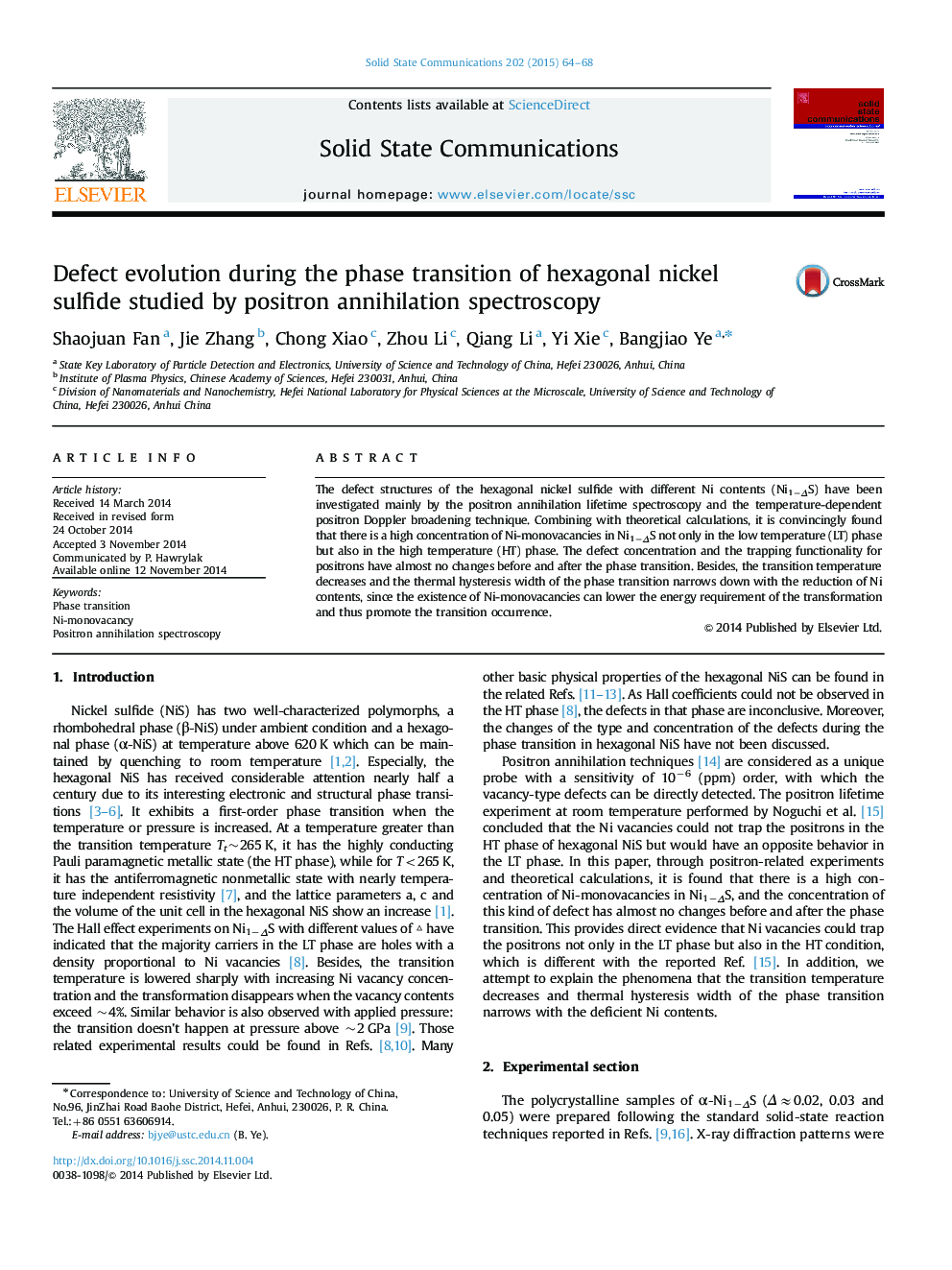| کد مقاله | کد نشریه | سال انتشار | مقاله انگلیسی | نسخه تمام متن |
|---|---|---|---|---|
| 1591671 | 1515594 | 2015 | 5 صفحه PDF | دانلود رایگان |
• The defects of the high temperature phase in hexagonal NiS are mainly Ni-monovacancies.
• The defect concentration and the trapping functionality for positrons have almost no changes before and after the phase transition in hexagonal NiS.
• The existence of Ni-monovacancies lowers the transition temperature and promotes the transition occurrence.
The defect structures of the hexagonal nickel sulfide with different Ni contents (Ni1−ΔS) have been investigated mainly by the positron annihilation lifetime spectroscopy and the temperature-dependent positron Doppler broadening technique. Combining with theoretical calculations, it is convincingly found that there is a high concentration of Ni-monovacancies in Ni1−ΔS not only in the low temperature (LT) phase but also in the high temperature (HT) phase. The defect concentration and the trapping functionality for positrons have almost no changes before and after the phase transition. Besides, the transition temperature decreases and the thermal hysteresis width of the phase transition narrows down with the reduction of Ni contents, since the existence of Ni-monovacancies can lower the energy requirement of the transformation and thus promote the transition occurrence.
Journal: Solid State Communications - Volume 202, January 2015, Pages 64–68
